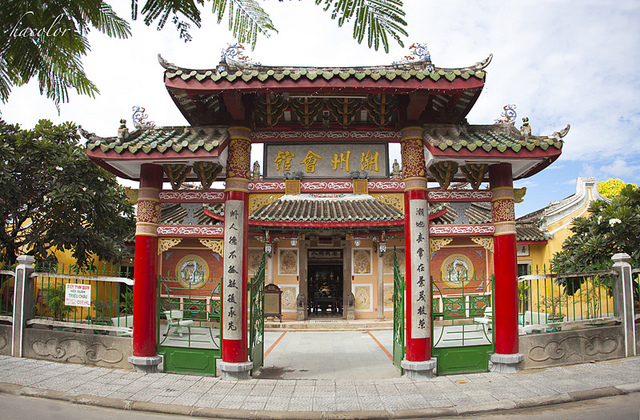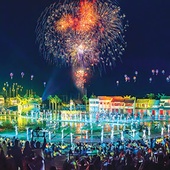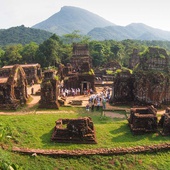Assembly Halls in Hoi An
Hoi An is famous for its historical role as a bustling trading town, hence the construction of many assembly halls for old-day traders to convene and socialize.
History & Location
Building Assembly Halls has been a longstanding tradition among the Chinese diaspora, serving as social and cultural hubs for their communities, especially when they migrated or engaged in business abroad. In Vietnam, numerous Assembly Halls can be found, particularly in Hoi An, which boasts a rich history of international trade. There are currently five significant Assembly Halls constructed by Chinese immigrants situated along Tran Phu Street, looking out over the Thu Bon River. While some of these halls have undergone changes over the years, the five that remain (Fujian, Chaozhou, Hainan, Cantonese, and Trung Hoa) have become renowned attractions in Hoi An.
Assembly Halls in Hoi An
Each of these Assembly Halls follows a characteristic architectural design that reflects the traditional layout used by other Chinese assembly halls across various cities. This typically includes a grand entrance gate, a tranquil garden filled with ornamental plants, a main hall, and an expansive altar room. The decoration of each hall plays a vital role, with careful attention given to details such as intricate statues, lacquered boards, and murals. However, due to the diverse beliefs within different Chinese communities, each assembly hall venerates different deities.
 Photo: tourdulich.org.vn
Photo: tourdulich.org.vn
Among the five assembly halls in Hoi An, the Fujian Assembly Hall stands out as the largest and most visited. It is located at 46 Tran Phu Street.
The Trung Hoa Assembly Hall, also known as the Ngu Bang Assembly Hall, is the oldest of the five, situated at 64 Tran Phu Street, and is dedicated to the worship of the Goddess Thien Hau.
The Ghaozhou Hall, often referred to as Trieu Chau or Ong Bon (Am Ban Pagoda), is found at 157 Nguyen Duy Hieu Street, near the Fujian Assembly Hall. This hall honors General Phuc Ba (Bon Dau Quan), a deity associated with water management.
The Cantonese Assembly Hall, or Quang Dong, located at 176 Tran Phu Street, was constructed in 1885 and features a serene courtyard adorned with intricate statuary.
The Hainan Assembly Hall, situated at 10 Tran Phu Street, is dedicated to 108 Chinese merchants who were wrongly accused of piracy and subsequently killed. Their names were later cleared, and King Tu Duc honored them by granting funds for the construction of an assembly hall to commemorate their memory.
How To Get There
Since Tran Phu Street is located in the heart of Hoi An, finding it is quite easy. Your entrance ticket to Hoi An typically includes admission to one of these assembly halls. However, note that some halls do not have ticket-takers, allowing for casual exploration. Biking or walking is recommended to fully immerse yourself in the charm of the town while visiting these historical sites.
Useful Information
- Location: Hoi An, Vietnam
- Best for: Family, couple, solo
- Entrance: Free
- Hours: 9AM - 4PM
- Distance to city center: 0.7km (0.4 mi)

Hoi An Impression Theme Park
The introduction of newly-opened Hoi An Impression Themed Park has brought a completely splendid experience. Prepare yourself for an eye-popping journey to go through the most amusing history session you could only have once in a lifetime.

My Son Sanctuary
If Hoi An enchants you by colorful lanterns along downtown streets by night, charming red towers in My Son surely amazes you in the sunset.

Cham Island (Cu Lao Cham)
Cham Island is a group of 8 small islands, which has been recognized by UNESCO as the World Biosphere Reserve (Cu Lao Cham Marine Park).








